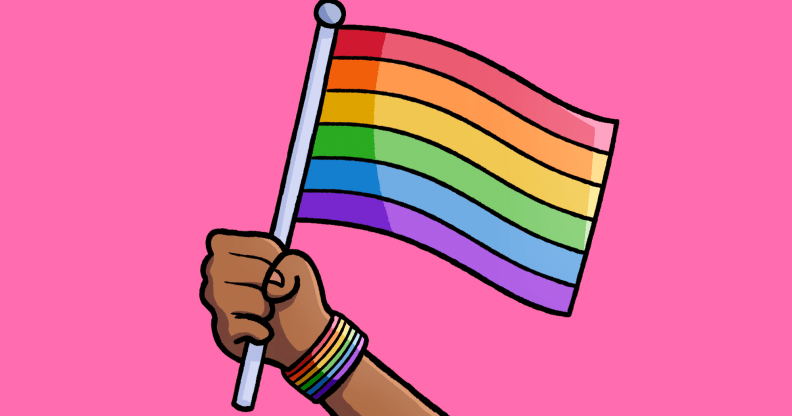A photographic celebration of gay Pride

An new online exhibition of photos of LGBT celebrations from cities around the world celebrates people’s pride in their sexuality and identity.
The Human Rights Watch online photo essay captures the courage, the exuberance, and the human faces of LGBT people’s Pride marches on five continents, over more than a decade.
The first photo documents the first-ever march to take place to celebrate LGBT people in the heart of Manila, Philippines in 1996.
People are shown marching through the streets with posters displaying their messages of ‘Can’t Live in the Closet’ and ‘Lesbian Rights Now’.
The human faces of LGBT Pride marches on five continents are documented over more than a decade of spreading the message that human rights are for everyone.
1998 in Harare, Zimbabwe, marchers join the crowds for their first time carrying the colours of the country with ‘out and proud in Zimbabwe’ written across the flag, showing their commitment to human rights.
Another photo depicts an equality march held in 2001 in Windhoek, Namibia, to defend human rights in the face of President Sam Nujoma’s verbal attacks on lesbian, gay, bisexual, and transgender people.
President Nujoma caused public outrage when he told Afrol News “The Republic of Namibia does not allow homosexuality or lesbianism here. Police are ordered to arrest you, deport you and imprison you.”
2001 San Francisco Pride March was joined by brave Members of Al Fatiha, a group for LGBT Muslims in a bid to demonstrate against the fact that homosexuality is forbidden and is punishable by death in some Islamic countries.
Another image shows the first-ever pride march in Guatemala in 2001. Jorge Lopez Sologaistoa from Oasis, a organisation in Guatemala run by gay men in an effort to support lesbian, gay and transgender told The Gully: “The only way we could start then was by not mentioning that we were going to do HIV/AIDS prevention work specifically with lgbt populations,”
A striking image of a gay activist beaten by an anti-gay nationalist mob during the first attempt to hold Gay Pride in Belgrade, Serbia in 2001 is one of the more moving images in the online exhibition.
Other highlights include:
Gay activist Adam Russo in Jerusalem’s Gay Pride continuing to march after he was stabbed by a homophobic protester. He was one of three marchers who were stabbed by an anti-gay protester at the 2005 parade, told the BBC: “We are all frightened but I’m here because of my right to protest. I will be not be shut down by anyone.”
Participants are watched by the police at an ecumenical service at an Anglican Church in 2005 during the first Gay Pride in Riga, Latvia, while anti-gay demonstrators threaten them. Despite fears of anti-gay violence, the gay pride got the go ahead by a court. The country’s Prime Minister Aigars Kalvitis showed his disgust by saying Riga should “not promote things like that”.
“For sexual minorities to parade in the very heart of Riga, next to the Doma church, is unacceptable,” he told LNT television.
Marchers celebrating a beautiful day at Gay Pride in Lima, Peru in 2006 where events like this takes them out of the secrecy they choose to live in rather then been perceived as flawed.
LGBT Pride Walk holding hands to express solidarity in 2006 in Calcutta, India. A country where gay people live in the shadows, where people gather to protest in public rallies.
An LGBT Pride marcher showing a sign of peace in 2006 in Rio de Janeiro, Brazil, Brazil launched a campaign called Brazil against Homophobia to make people more aware in their country.
In 2006, marchers in the Dyke March organised by the Forum for the Empowerment of Women, Johannesburg, South Africa stepped out in bright yellow t-shirts and colourful banners.
Lesbian feminists marching in the streets in 2007 in Santiago, Chile showing their courage and their right to be themselves.
To view the Human Rights Watch online photo essay click here.

